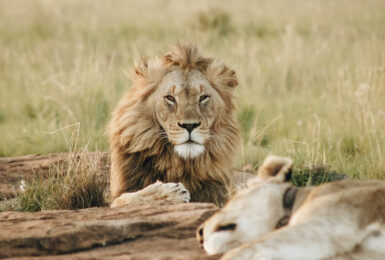
There’s little that won’t impress you when it comes to South African food (and wine… oh the wine). But there is one South African tradition that might just be a cut above the rest – braai. If you’re thinking that the braai is nothing more than a simple BBQ, prepare to be schooled…
What on earth is it?
A braai is an integral part of South African culture, and a common practice in any South African household. The word ‘braai’ is actually Afrikaans, deriving from the Dutch word for ‘roast’, and is usually an occasion for friends and family to come together in celebration. Through its turbulent past, braaing is one of the few things not specific to one ethnic or cultural group in South Africa – it’s a tradition that ties the nation together.
Okay yes, it’s similar to a BBQ, but it’s so much more than that. Traditional braai’s are cooked on local wood, such as kameeldoring wood, instead of coal or gas to give the meat a distinct flavour. It’s pretty much a special South African meat-fest that can last for hours on end.

When do you have a braai?
Birthdays, events, achievements – let’s be honest, South Africans need no excuse to braai it up. Most families will host a smaller braai once a week, and a bigger braai on special occasions. They’ll even have a mini-braai for breakfast if they fancy it (and they fancy it quite a lot). September 24th is official South African heritage day, but locals know it as ‘braai day’.
No matter what time of day, before or after work, braai’s can happen rain or shine. South Africans have even found a way to braai indoors, especially in Cape Town where the wind is king. Not braaing? Not an option.
What do you eat at a braai?
The meat is the hero of any braai. On a braai grid you’ll typically find anything from chicken and seafood, to wild boar sausages and ostrich burgers. A good braai will have a huge selection of meat, with an abundance of sides. Another braai tradition is ‘braaibroodjie’ – a grilled sandwich filled with meat from the braai as well as salad, cheese and sweet chutney.
Depending on your host, you’ll likely be offered a slice or two of yummy biltong to chew on while you wait for the meat to cook. Of course, no braai is complete without a selection of fine local wines or a cold Jack Black beer to wash it all down. Heaven.
RELATED: THE 15 BEST FOOD EXPERIENCES YOU CAN DO WITH CONTIKI

Is ‘braai etiquette’ a thing?
It is absolutely a thing, and it’s taken pretty seriously. The braaier, or ‘Braaimaster’ is usually the host of the braai, and in charge of the fire and the meat. Every braaier has their own specific process of doing things, and their own preference of wood and meat. Backseat braaing is heavily frowned upon, so whatever you do, don’t chime in and suggest ways that the braaier could do things differently.
If you’re invited to a “chop ‘n drop” braai, you’re expected to bring your own meat and wine/beer. If you’re invited to a “bring and braai,” it means the only thing the host is providing is a fire, so bring the rest. Pro tip: If the rugby is on, for the love of god – make sure you know who’s playing.

